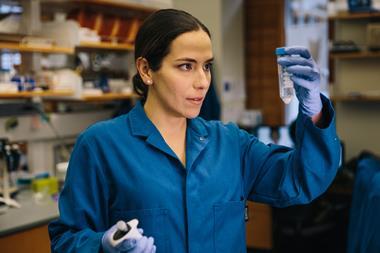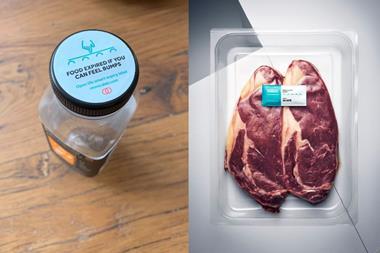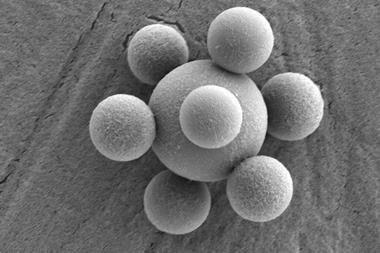Biochemical model suggests that silver ions, not nanoparticles, cause a rare skin complaint
Scientists have put forward a detailed biochemical model to explain argyria, a condition which turns sufferers’ skin a distressing blue colour. It is caused by chronic exposure to silver and although the new work won’t lead to a cure it does provide new insights into the health risks associated with silver nanoparticles that are now ubiquitous in modern life.
Silver nanoparticles (Ag-NPs) are so widespread because of their useful antimicrobial properties. They can be found in all kinds of consumer products: from kitchen sprays to athletic socks to bandages. But it takes ‘pretty significant exposure to silver’ to end up with blue skin, says Robert Hurt of Brown University, Rhode Island, US, who led the new study. People only usually develop whole body argyria if they regularly drink large amounts of colloidal suspensions of silver. These concoctions are touted as health tonics, but Hurt reflects the scientific consensus when he describes them as ‘ill advised’.
Biopsies of people with argyria have shown that the blue skin colour is caused by ‘argyrial deposits’: mixtures of silver sulfide (Ag2 S) and silver selenide (Ag2 Se). In most cases these argyrial deposits are very unpleasant, but not actually toxic to humans, according to Alan Lansdown, an expert on silver in healthcare at Imperial College London, UK.
Because of the broader worries about Ag-NPs, Hurt studies what happens to them in the environment. One day he made the innocuous discovery that they dissolve very quickly in acidic solutions. That made his team start to ask what happens to silver in environments with a low pH – like the stomach. ‘We thought: “Hey! The body is an environment too, so let’s see how the particles behave in there”,’ he says.
The team tried to understand argyria by studying the individual chemical transformations that Ag-NPs undergo in the body. First, they looked at how Ag-NPs oxidatively dissolve in simulated gastric juices. Perhaps unsurprisingly, they found the amount of leached Ag+ depends on pH and residence time.
Silver development
It is already known that silver salts produced by oxidative dissolution can enter the bloodstream via ion pumps. Hurt thought that the silver ions could then hitch a ride around the body complexed to proteins. His group showed that silver salts like silver chloride can form soluble complexes with thiols like glutathione, an endogenous antioxidant. Previous studies have shown this complex can enhance the transport rate of Ag+ across biological membranes, so Hurt reasons this could act as a transport mechanism.
Then came the key discovery. When model silver-thiol complexes in a skin-simulating collagen matrix were irradiated with UV light, a photo-oxidation took place. The reaction is a lot like the one used to develop the first photographs. The model skin converted complexed Ag+ to elemental silver, which spontaneously formed Ag-NPs. The pure silver can then be sulfidated and sulfur or selenium exchange reactions produce the very mixture of Ag2 S and Ag2 Se that is observed in argyrial deposits. All this points to Ag+ as the major bioavailable silver species and indicates the argyrial deposits are not the nanoparticles that were ingested in the first place.
Lansdown agrees that Ag+ is likely to be the bioavailable form of silver. But he emphasises that this result should be approached with real caution. ‘You don’t want to put the public off good products, but neither do you want to get them hooked on something that isn’t going to do them any good,’ he says.
Argyria aside though, Hurt thinks his work may suggest a new way of thinking about Ag-NPs. ‘If we’re living in a world awash with nanoparticles formed by natural processes, then it does change the way we think about engineered particles,’ he says. ‘If we’ve evolved alongside them, then that suggests they may not be so dangerous.’












No comments yet